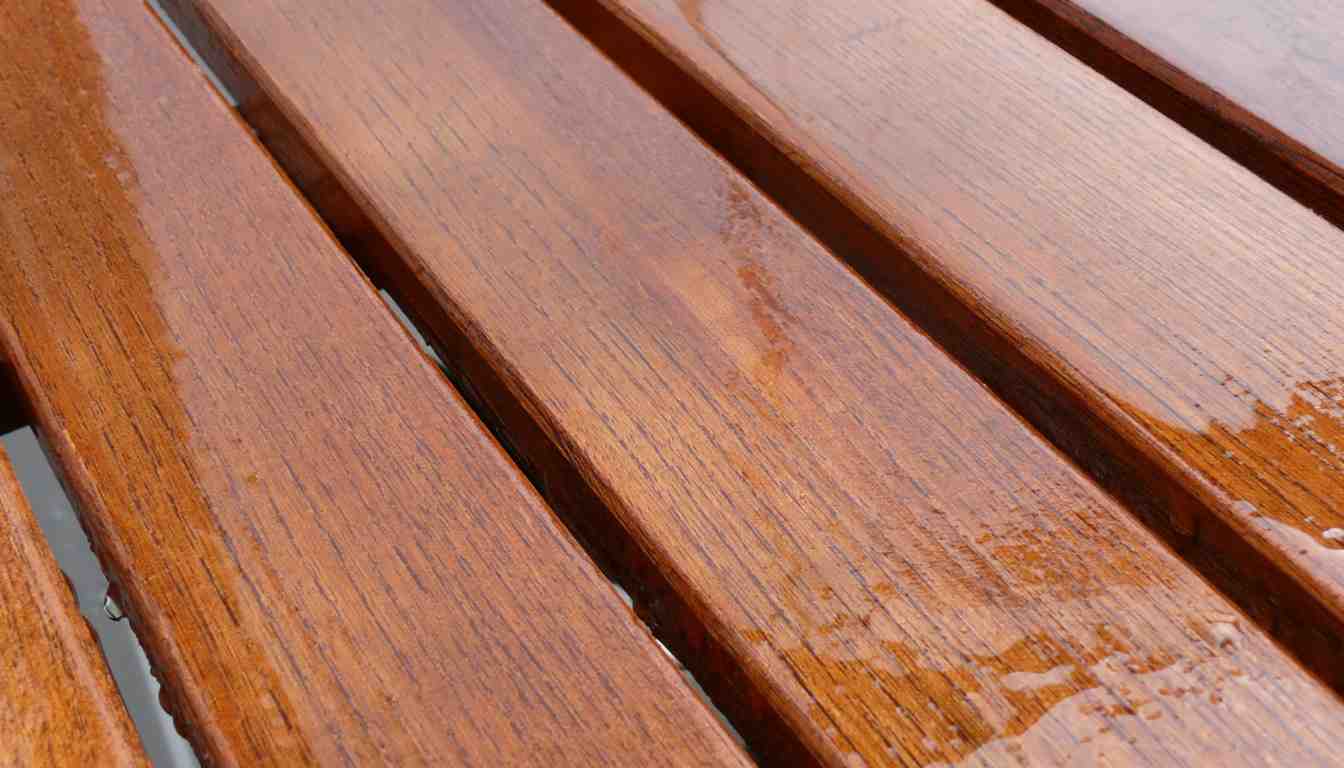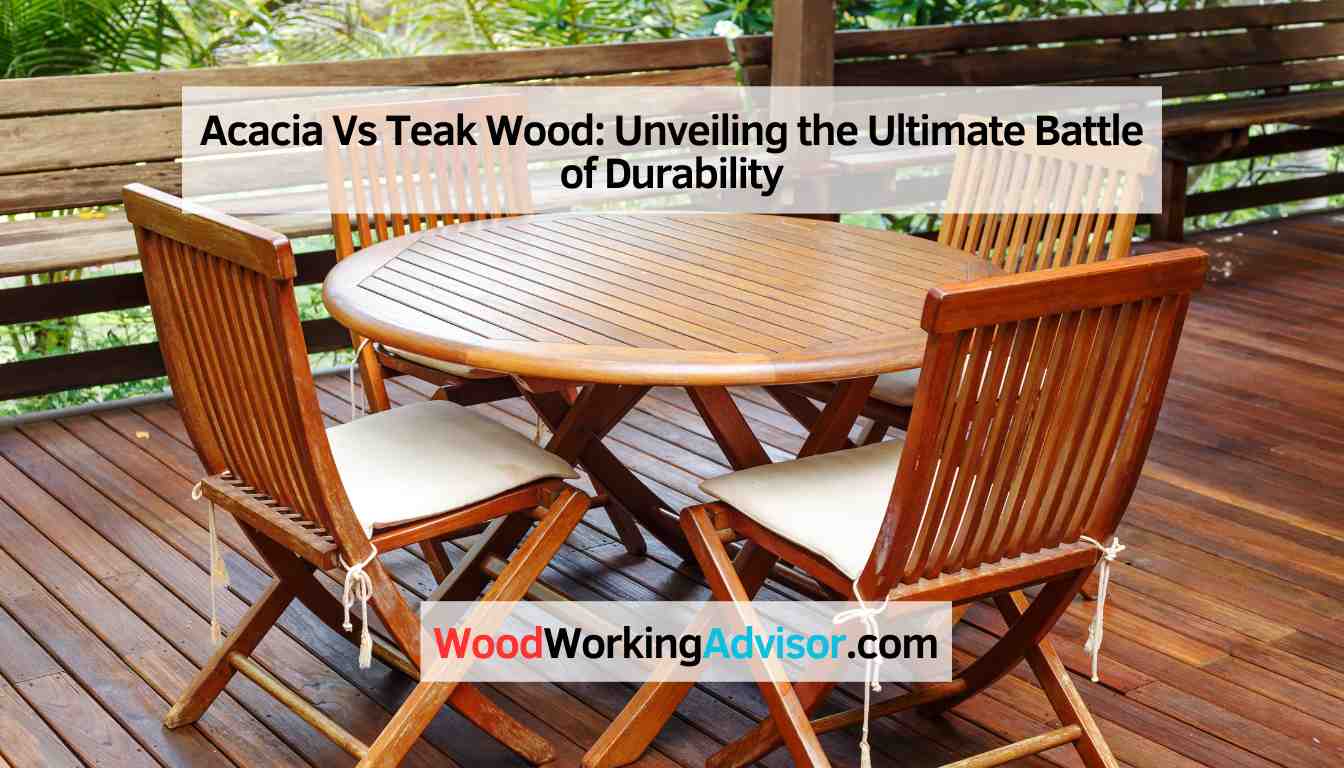Acacia and Teak wood are both popular choices, but Acacia is more affordable while Teak offers superior durability and natural resistance to decay and pests. Acacia wood is known for its strength, versatility, and unique grain patterns, making it suitable for a wide range of furniture and decor.
Teak wood, on the other hand, is highly sought after for its rich golden color, exceptional strength, and ability to withstand harsh weather conditions. It is commonly used for outdoor furniture, boat decks, and flooring. Both types of wood have their own distinct characteristics and benefits, so the choice ultimately depends on personal preference, budget, and intended use.
Durability Of Acacia Wood
Acacia wood boasts impressive durability, rivaling that of teak wood. It is known for its resilience and resistance to wear and tear, making it a popular choice for outdoor furniture and flooring.
Acacia wood, known for its remarkable durability, is a popular choice for furniture, flooring, and outdoor projects. This natural material offers a strong and sturdy option that can withstand the test of time. When it comes to its durability, acacia wood proves itself superior to many other wood types. In this section, we will explore the various aspects that contribute to the exceptional durability of acacia wood.
Natural Resistance
One of the key factors that make acacia wood highly durable is its natural resistance to various external elements. This tropical hardwood contains a high concentration of natural oils, making it resistant to water, moisture, and even extreme weather conditions. These natural oils act as a protective barrier, preventing the wood from absorbing water and reducing the risk of warping, cracking, or rotting.
Pest And Rot Resistance
In addition to its natural resistance to water, acacia wood also exhibits impressive resistance to pests and rot. The dense grain structure of this hardwood makes it challenging for pests such as termites, wood borers, and fungi to invade and damage the wood. This resistance to pests and rot ensures that acacia wood maintains its structural integrity and longevity, making it an ideal choice for both indoor and outdoor applications.
Not only is acacia wood resistant to pests and rot but it also requires minimal maintenance. With proper care and regular cleaning, acacia wood furniture and flooring can remain in excellent condition for years to come. Its durability and resistance to wear and tear make it an excellent long-term investment that can withstand heavy use in high-traffic areas.
Overall, acacia wood stands out for its durability, natural resistance, pest resistance, and rot resistance, setting it apart from other wood types. Whether you are considering outdoor furniture or indoor flooring, acacia wood provides a reliable and long-lasting option that combines both strength and beauty. Its natural resistance, combined with minimal maintenance requirements, makes it an excellent choice for those seeking durability and longevity without compromising on aesthetics. Choose acacia wood for your next wood project and enjoy its exceptional durability for years to come.

Durability Of Teak Wood
Teak wood is known for its exceptional durability, making it a preferred choice over Acacia wood. With its natural resistance to rot, pests, and harsh weather conditions, teak wood ensures long-lasting furniture and structures that require minimal maintenance.
Teak wood is renowned for its exceptional durability, making it a popular choice in the world of woodworking. Its natural properties make it resistant to various elements, ensuring a long-lasting and reliable material for a wide range of applications.
Natural Oils
One of the primary reasons for teak wood’s impressive durability is its high content of natural oils. These oils, present in teak wood’s dense grain structure, act as a natural barrier against moisture and environmental damage. The oils repel water, preventing it from seeping into the wood and causing rot or decay.
These natural oils also play a vital role in maintaining the wood’s appearance over time. They help to preserve its rich golden color, preventing it from fading or greying due to exposure to the sun’s UV rays. This makes teak wood an ideal choice for outdoor furniture and decking, as it can withstand constant exposure to harsh weather conditions without losing its attractive hue.
Insect And Moisture Resistance
Teak wood’s natural oils not only provide moisture resistance, but they also act as a deterrent against insects and pests. The oils contain resins and chemicals that repel termites, wood borers, and other wood-damaging insects, ensuring that your teak wood furniture or fixtures will remain free from these destructive pests.
In addition to its insect resistance, teak wood is also highly resistant to moisture damage. Its natural oils and dense grain structure prevent water absorption, minimizing the risk of swelling, warping, or cracking that can occur with other types of wood. This resistance to moisture makes teak wood an ideal choice for both indoor and outdoor applications.
Whether used in kitchens, bathrooms, or outdoor settings, teak wood’s durability makes it a reliable material that will stand the test of time. Its ability to resist both moisture and insects ensures that your investment in teak wood furniture or fixtures will provide you with years of reliable use and low maintenance requirements.
Comparison Of Acacia And Teak Wood
When it comes to choosing the right wood for your furniture or outdoor projects, it is important to consider the durability, strength, and maintenance requirements. Two popular choices that often come up in the discussion are Acacia and Teak Wood. In this article, we will compare these two types of wood in terms of their strength and hardness, weather resistance, and maintenance.
Strength And Hardness
Strength and hardness are important factors to consider when selecting wood for furniture or construction projects. Acacia wood is known for its high strength and durability, making it an excellent choice for outdoor furniture. It has a Janka hardness rating of around 1700, which means it is resistant to wear and impact.
On the other hand, Teak wood is known for its exceptional strength and hardness. With a Janka hardness rating of around 1000, it is even harder than Acacia wood. The dense nature of Teak wood makes it highly resistant to weather damage and insect infestation.
Weather Resistance
When it comes to weather resistance, both Acacia and Teak wood are excellent choices. Acacia wood is naturally resistant to moisture, which makes it highly resistant to rot and decay. It can withstand exposure to various weather conditions, including rain, heat, and sunlight, without deteriorating quickly.
Teak wood, however, is renowned for its exceptional weather resistance properties. It contains natural oils and silica that make it highly resistant to water, rot, and fungal attack. These properties make Teak wood suitable for outdoor furniture and marine applications, where it is exposed to constant humidity and saltwater.
| Strength and Hardness | Acacia Wood | Teak Wood |
|---|---|---|
| Janka Hardness Rating | 1700 | 1000 |
Maintenance
When it comes to maintenance, Acacia wood requires regular care to maintain its beauty and durability. It is recommended to clean it with mild soap and water regularly. Applying a protective sealant or oil can help maintain its natural color and protect it from the elements.
Teak wood, on the other hand, requires minimal maintenance. Its natural oils provide it with a natural resistance to moisture and prevent the growth of fungi or bacteria. Over time, Teak wood develops a beautiful silver-gray patina, but if you prefer to maintain its original color, periodic cleaning and oiling are recommended.
- Acacia wood has a Janka hardness rating of 1700, while Teak wood has a rating of 1000.
- Both Acacia and Teak wood are highly resistant to weather damage.
- Acacia wood requires regular maintenance, including cleaning and sealing, to maintain its durability and appearance.
- Teak wood requires minimal maintenance due to its natural oils and develops a silver-gray patina over time.

Frequently Asked Questions Of Acacia Vs Teak Wood
What Is Better Teak Or Acacia Wood?
Teak wood is better than acacia wood due to its durability, strength, and resistance to rot and decay. Teak has natural oils that protect it from weather damage, making it ideal for outdoor furniture. Acacia, although less expensive, is more prone to damage and requires more maintenance.
What Is The Downside Of Acacia Wood?
The downside of acacia wood is that it can be prone to warping and cracking if not properly maintained. Regular sealing and moisture control is necessary to prevent these issues. Overall, acacia wood is a durable and attractive choice for furniture and flooring.
Is Acacia Wood High Quality?
Yes, Acacia wood is known for its high quality. It is a durable and strong hardwood with natural resistance to rot and pests. Its beautiful grain patterns and warm colors make it popular for furniture and flooring. Acacia wood is also eco-friendly as it comes from sustainable sources.
Which Wood Is Better Than Teak?
Teak is considered one of the best woods for its durability and natural resistance to decay. However, some tropical hardwoods like Ipe and Mahogany are known to be even stronger and more resilient than teak.
Conclusion
To summarize, both Acacia and Teak wood have their own unique qualities and benefits. Acacia is a cost-effective option with its durability and resistance to pests, while Teak stands out with its natural oils and weather resistance. Ultimately, the choice between the two will depend on your specific needs and preferences.
Whether you opt for the affordability of Acacia or the luxurious beauty of Teak, both woods bring an element of timeless elegance to any space.


